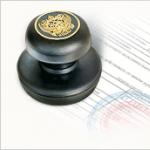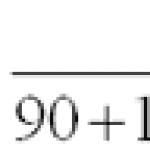Definition
Turnover of working capital (assets) shows how many times during the analyzed period the organization used the average available balance of working capital. According to the balance sheet, current assets include: inventories, cash, short-term financial investments and short-term receivables, including VAT on purchased assets. The indicator characterizes the share of working capital in the total assets of the organization and the efficiency of their management. At the same time, industry-specific features of the production cycle are superimposed on it.
Calculation (formula)
The formula for turnover of current assets is as follows:
Working capital turnover = Revenue / Current assets
In this case, current assets are taken not at the beginning or end of the analyzed period, but as an average annual balance (i.e., the value at the beginning of the year plus the end of the year is divided by 2).
Along with the turnover ratio, the turnover rate in days is often calculated.
Working capital turnover in days = 365 / Working capital turnover ratio
In this case, turnover in days shows how many days the company receives revenue equal to the average amount of working capital.
Normal value
There are no generally accepted standards for turnover indicators, including turnover of working capital; they are analyzed either in dynamics or in comparison with similar enterprises in the industry. A ratio that is too low, not justified by industry characteristics, shows excessive accumulation of working capital (often its least liquid component, inventories).
Material from the site
Determination of business activity and turnover
Business activity (or "turnover")– a range of actions aimed at promoting the enterprise: in the product sales market, in financial activities, in the labor market, etc. Expanding the sales market, the range of goods and services, increasing their sales, efficient use of the entire resource base (finance, personnel, raw materials) are the factors on which the increase in business activity of any enterprise depends.
Among the indicators of business activity, the main factor in the profitability of an enterprise is the duration of the turnover of fixed assets. The shorter the turnover, the more efficiently the financial system of a given enterprise works:
- the sales volume for a specific period depends on the turnover rate, which means the absolute value of the profit indicator increases;
- the higher the turnover, the fewer semi-fixed costs at each production stage, which increases the profitability of the enterprise;
- accelerating the turnover of assets at any stage of their transformation entails accelerating the turnover at subsequent stages;
- the rate of turnover of resources is the speed of their conversion into monetary form, which affects the solvency of the enterprise.
Working capital turnover ratio reflects how many times in the reporting period the enterprise used the average annual balance of working capital (current assets).
The turnover ratio is calculated to assess the efficiency of using working capital and analyze the business activity of the enterprise.
Working capital turnover ratio. Formula
The calculation looks like this:
K ob. = VR/KA avg.
- Cob - fixed assets turnover ratio
- BP - from sales (line 010 of the profit and loss statement)
- KA avg - average annual value of short-term assets (TOTAL of section II, line 290 of the balance sheet, the sum of columns 3 and 4 divided by 2), i.e. The average between the values at the beginning and end of the year is taken.
The ratio shows the efficiency of management of the company's current assets. In addition, it is subject to the influence of industry specific production and seasonal changes in the market.
Together with the turnover ratio, the turnover in days is usually found. In this case, turnover in days shows how many days the company will spend to receive revenue equal to short-term assets (OS). How to determine this indicator?
Rev (day) = 365 / K rev,
- About (days). - turnover in days;
- The numerator is the number of days in a year.
In Belarus, there is no statutory standard for fixed asset turnover. Values should be analyzed over time or in comparison with industry peers. A decrease in the ratio means a slowdown in asset turnover. Accordingly, its increase characterizes the growth of the company’s business activity. If the Cob is too low, significantly different from the industry average, this indicates an excessive accumulation of short-term assets (most often these are goods in warehouses).
It is necessary to calculate the coefficient to assess the rate of conversion of working capital into money. It is closely related to the efficiency of sales management at the enterprise: an increase in the indicator in dynamics characterizes an increase in sales and profits. To calculate the indicator, you will need data on revenue and the average annual cost of fixed assets.
How efficiently are working capital used? Is there a shortage of assets? Are there problems with the money in circulation?
What are working capital?
These are revolving funds that are involved in the process of production and marketing of products. They provide the process of exchanging money for raw materials, raw materials for products, products for money.
Working capital is the cost of all items of labor involved in the production process. They change their form (from natural to monetary) and are included in the cost of production.
The cost of this indicator includes:
- Costs of materials, raw materials.
- Costs of creating, storing and selling products.
- Money received from sales.
Every enterprise has working capital; they are needed to organize the smooth operation of the company. Their lack can lead to production downtime due to the impossibility of purchasing raw materials, paying wages to staff, paying taxes, and utility bills. The deficit has a negative impact on current processes and the further development of the enterprise; a cash gap may form (lack of money to finance upcoming expenses).
If there is an insufficient amount of its own working capital, the company attracts borrowed money (credits, loans, loans, deferments in payments to the budget).
More information on the topic can be obtained from the video:
Assessing the efficiency of using working capital
To assess the effectiveness of working capital management, there is a working capital turnover ratio (CRT). It determines the number of revolutions during which raw materials manage to turn into money. Calculated for any period - month, quarter, year.
K OOS indicates how many times funds are turned over over a certain period, at what speed.
Formula for calculation:

- B - revenue;
- ΔOC is the average amount of working capital.
ΔOA is calculated using the formula:

- OS NP - current assets at the beginning of the period;
- OS KP - current assets at the end of the period.
To calculate the environmental impact ratio, you can use balance sheet data. The formula in this case will be like this:

- Page 2010 is the value of string 2010 from Form 2.
- Page 1200 NG - the value of line 1200 at the beginning of the year (form 1).
- Page 1200 KG - the value of line 1200 at the end of the year (form 1).
Calculation of K OOS using an example
To make it easier to calculate the working capital turnover ratio, you can use an Excel table (download example).
Conclusions from the table. In 2014, revenue indicators and the volume of fixed assets fell, but despite this, the environmental impact ratio increased by 1.06. This means that the number of turnovers has increased over the year. Further, since 2014, there has been growth in all indicators. Consequently, the enterprise operates more and more efficiently every year.

Normal value of the indicator
The working capital turnover ratio always takes a positive value, but it can be anything - it all depends on the industry and the specific enterprise. The Environmental Protection Code does not have any standard by which one can evaluate whether 1 or 100 is too much or too little. Each company will have different results. And to understand the current economic situation, they need to be compared with values from previous years and the industry average. Direct competitors will be of particular interest. If there is growth (as in the example above), this is a positive sign. A decrease is a reason to think about organizing the production/sales process. Therefore, we must strive to increase the coefficient.
Important! Changes in environmental protection regulations can be influenced not only by internal, but also by external factors (changes in tax legislation, state sanctions policy, decline in the entire industry, reduction in state support, etc.).
You can increase the value of the indicator in several ways:
- Reduce the amount of debt of the enterprise.
- Reduce the turnaround time for raw materials/goods.
- Stimulate demand.
- Reduce production costs.
- Strengthen the company's image among clients.
- Update the material and technical base, introduce new technologies.
- Improve the quality of services provided and goods sold.
- Reduce inventory.
- Initiate personnel changes.
It is also important to analyze the indicator with other economic indicators (liquidity ratio, asset turnover, etc.). Data must be taken for similar periods of time.
Monitoring environmental protection helps to notice in a timely manner a situation that threatens the company’s work and to adjust management decisions in a timely manner, because the faster the funds are turned over, the sooner the company’s expenses will be recouped. The slowdown in turnover leads to an increase in the need for working capital.
Working capital is the most important factor in the production process and takes up a fairly large share in the total value of the enterprise's property. Therefore, it is necessary to rationally approach the size of mobile assets and plan their values. For this, indicators of the efficiency of working capital operation are used (turnover ratio, load factor, profitability, etc.)
The essence of the indicator
 This indicator is considered basic when planning the required amount of mobile funds, since it reflects the number of fund turnovers over the period. In other words, the working capital turnover ratio characterizes the efficiency of using working capital in order to generate income from core activities.
This indicator is considered basic when planning the required amount of mobile funds, since it reflects the number of fund turnovers over the period. In other words, the working capital turnover ratio characterizes the efficiency of using working capital in order to generate income from core activities.
Like any ratio, the indicator is relative and reflects how many turnovers need to be made by mobile means to ensure a given rate of revenue.
How to calculate the working capital turnover ratio
In order to find this indicator, it is necessary to identify two quantities - income and working capital. In the planned calculation, income is reflected through the revenue indicator, and working capital is reflected through the average balance of mobile funds.
The turnover ratio is found through the ratio of income and working capital.
It is worth noting that the indicators must be comparable, that is, both the revenue and the cost of mobile funds must be taken for one period, for example, for a year.
General calculation formula
The turnover ratio is measured in the number of revolutions per period. In general, the formula for calculating the working capital turnover ratio is presented as:
Tr = TR/C rev,
Tr (turnoverratio) – working capital turnover ratio, rpm;
TR (total revenue) – revenue, rub.;
C ob – average value of mobile funds, rub.
The above indicators, in turn, are found using the following algorithm:
TR = P * Q,
P (price) – unit price of the product, rub.;
Q (quantity) – number of products produced and sold, rub.
C rev = (C np + C kp)/2,
C np – the amount of working capital at the beginning of the period, rub.;
Скп – the amount of working capital at the end of the period, rub.
Balance calculation formula
To find the turnover ratio, it is necessary to use data from the income statement and balance sheet.
The data will allow you to find the indicator only for the year; other periods cannot be calculated from the balance sheet information.
Methodology (formula) for calculating the turnover ratio of current assets on the balance sheet:
Tr = line 2110 OFR / (line 1200 np BB + line 1200 kp BB)/2,
Tr (turnoverratio) – working capital turnover ratio, rpm;
line 2110 OFR – revenue according to the financial results report, rub.;
line 1200 np BB – the amount of working capital at the beginning of the year, rub.;
line 1200 kp BB – the amount of working capital at the end of the year, rub.
Example of calculation by balance
Tr = 1800,000 / (400,000 + 500,000)/2 = 4 rev/year.
Thus, the turnover ratio for 2014 is 4 turnovers, that is, mobile funds will turn over four times during the period.
Analysis and standard value of the turnover ratio of current assets
The indicator must be calculated constantly and identify dynamics over several years, because data for one period does not give an overall picture of the situation.
There are no specific normative coefficient values, but each enterprise sets a target value for itself.
In general, the more revolutions mobile capital makes, the higher the income will be, but at the same time there will be a release of working capital from operation.
Video - indicators of efficiency in the use of working capital:
A decrease in the ratio compared to the previous period reflects a negative trend - the organization will not receive part of the revenue. To level out the negative aspects, it is rational to involve additional mobile funds in production.
What most often depends on
We can identify a list of factors that most strongly influence the value of the coefficient under consideration.
Firstly, this indicator can be significantly changed by the time spent by working capital in inventories, accounts receivable, unsold products in the warehouse and unfinished products.
Secondly, the turnover ratio depends on changes in the duration of technological and production cycles, personnel qualifications, conditions for the sale of services, goods and works and, in general, on the peculiarities of the organization of the company’s activities.
What does an increase in the working capital turnover ratio lead to?
 The growth of the indicator is more often perceived as a positive factor - the faster mobile funds turn around, the more revenue the company will receive. Accelerating turnover leads to an improvement in other indicators of effect and efficiency - profit, etc.
The growth of the indicator is more often perceived as a positive factor - the faster mobile funds turn around, the more revenue the company will receive. Accelerating turnover leads to an improvement in other indicators of effect and efficiency - profit, etc.
But there are also negative aspects to this - too much inventory needs to be stored somewhere, and this entails additional costs. Due to faster turnover, productivity also increases, which leads to higher wages.
Therefore, before planning to increase the ratio, it is necessary to adjust not only the potential additional income, but also the increasing costs associated with it.
Possible reasons for the decline
A slowdown in turnover may occur due to an increase in the duration of one turnover, the reasons for which are an unjustified increase in inventories, the appearance of customer debt, a failure in the production process and, as a result, unfinished products.
Possible reasons also include a decrease in demand, due to which finished products remain in stock longer and production volumes fall.
In general, the working capital turnover ratio allows for a fairly qualitative assessment. But for a more complete and objective assessment, it is advisable to calculate other indicators of efficiency and liquidity stability.
Video - the working capital of the enterprise and the efficiency of their use in the form of a turnover ratio.




